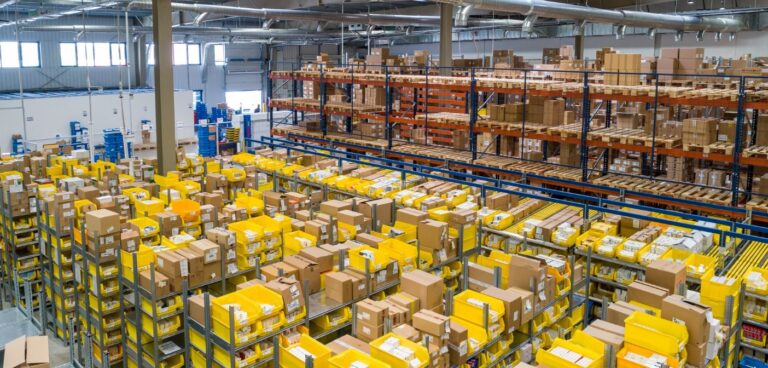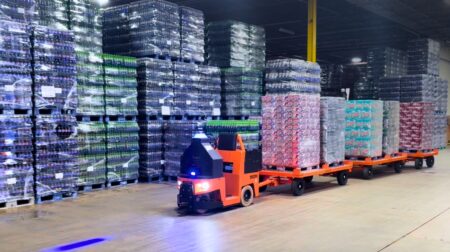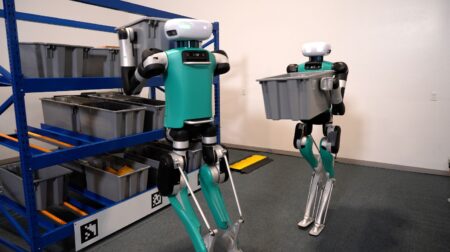Vecna Robotics, a material handling automation solutions provider, has announced the release of new software and hardware upgrades to its AFL-class autonomous forklift.
According to Vecna, the offering will expand its products’ reach within warehouse and factory floors by optimising material transport between other machinery and equipment, with specific focus on low-lift workflows.
Some of the above-ground workflows the offering is designed to support include: inbound staging to AS/RS induction; delivering materials to lift stands for work-in-process flows; and loading and extracting from robotic palletisers and stretch wrappers.
The company has said that the warehouse automation market is expected to double over the next five years and that its solution, the Vecna AFL, which has a 3,000 lbs (1,360kg) capacity and lift heights up to 60 inches (152cm), was designed to optimise work-in-process, packaging and finished goods workflows.
The solution provider suggest its system can improve efficiency and reduce material handling costs by up to 30% for most common workflows ,while also maintaining greater than 99% uptime using Vecna’s PivotalTM Command Center.
“This upgrade to our AFL platform is a response to customer need to automate more workflows – including low-lift with conveyors and risers – in the midst of chronic labor shortages,” said Anthony Moschella, SVP of product management at Vecna Robotics.
“The ability to coordinate autonomous material transport with other automated systems and common warehouse equipment is the first critical step in our mission to help warehousing and manufacturing re-balance their worker-robot mix and free up labor for more valuable tasks.”
Vecna has outlined some of the features of the release, which include: better forklift performance and vision with fork carriage sensor fusion; improved adjustments to misaligned pallets; real-time remote camera views of the forks; smoother navigation in tight spaces with a new bumper design; more flexible integration mechanisms; built-in barcode scanners for payload verification; and advanced orchestration with dynamic mission planning and swapping.









